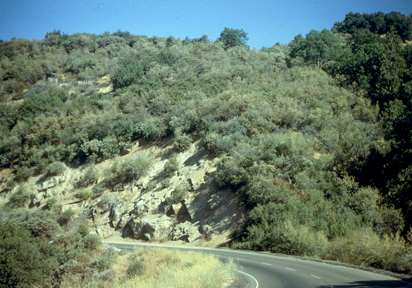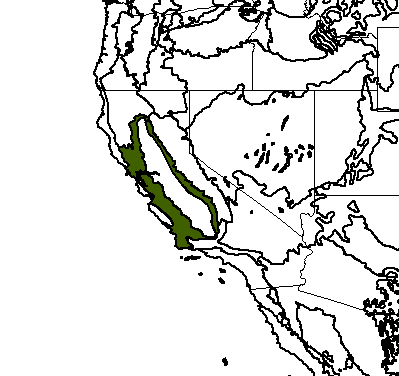
Chaparral east of Fresno, California (c) 2004 Maurice J. Kaufmann
Bioimages home (click on an image to enlarge)
view
this page in its intended navigation context
California Interior Chaparral and
Woodlands
(WWF
ecoregion
NA1202)

Chaparral east of Fresno, California (c) 2004
Maurice J. Kaufmann

Source of bioregions data:
Olson, D. M. and
E. Dinerstein. The Global 200: Priority ecoregions for global conservation. (PDF
file) Annals of the Missouri Botanical Garden 89:125-126.
Distinctiveness (1=highest,4=lowest): 1
(globally outstanding)
This ecoregion contains a mosaic of communities, including grasslands, chaparral
shrublands, open oak savannas, serpentine communities, closed-cone pine forests,
wetlands, and salt marshes. Some of these communities are unique to
California. The ecoregion supports a relatively large number of endemic
plant and animal species. *
Conservation Status (1=most endangered, 5=most
intact): 3 (vulnerable)
Approximately 30% of the ecoregion is intact, concentrated in steeper areas.
Fragmentation by development, fire supression, overgrazing, conversion to annual
grasses, and introduction of invasive species are threats.*
 Arctostaphylos
spp. (manzanita) (c) 2004
Maurice J. Kaufmann
Arctostaphylos
spp. (manzanita) (c) 2004
Maurice J. KaufmannSoda Lake area, Carrizo Plain, San Luis Obispo Co., California

(c) 2005
Daniel P. Duran
hires
* Ricketts, T.H., E. Dinerstein, D.M. Olson, C.J. Loucks, et al. (1999) Terrestrial Ecoregions of North America: A Conservation Assessment. World Wildlife Fund - United States and Canada. Island Press, Washington, D.C. pp. 314-317.
Except as noted, images copyright 2002-2004 Steve Baskauf - Terms of use